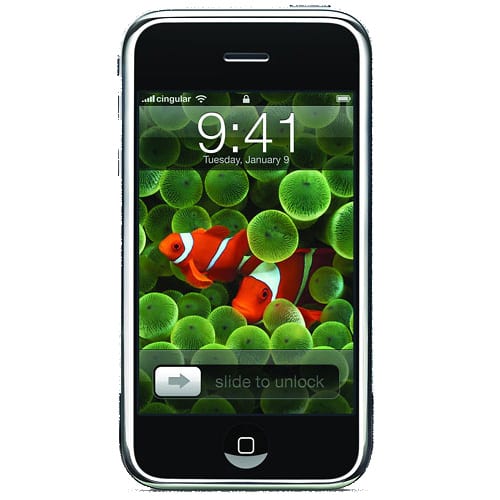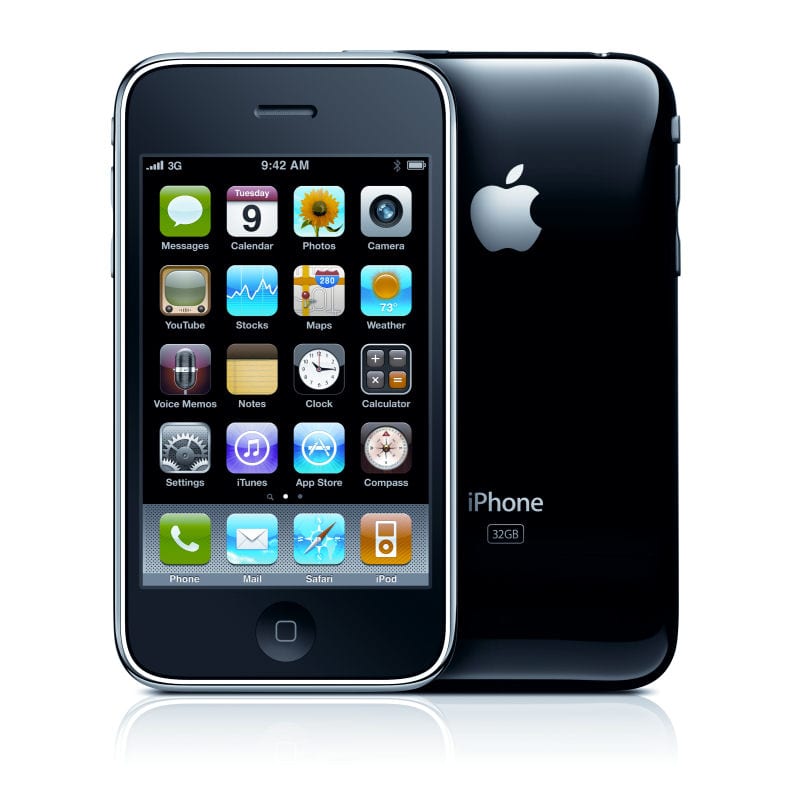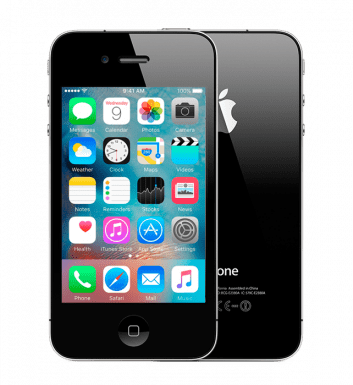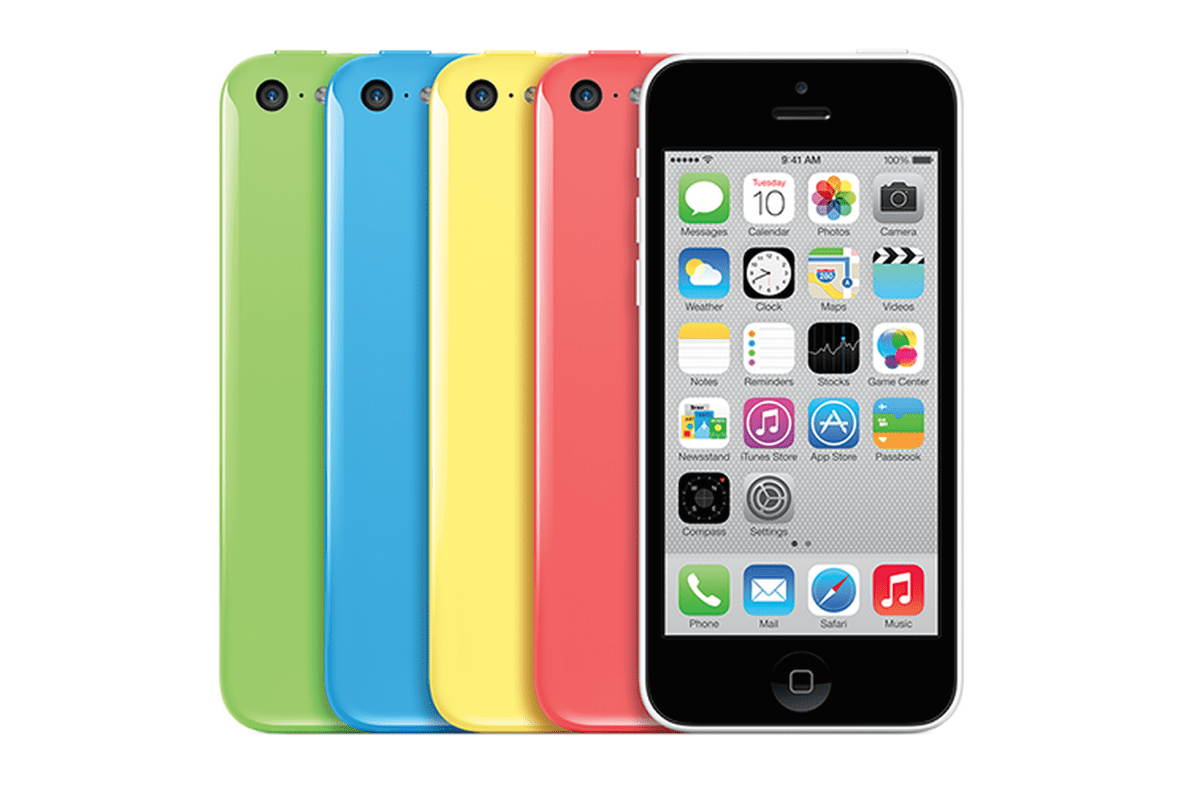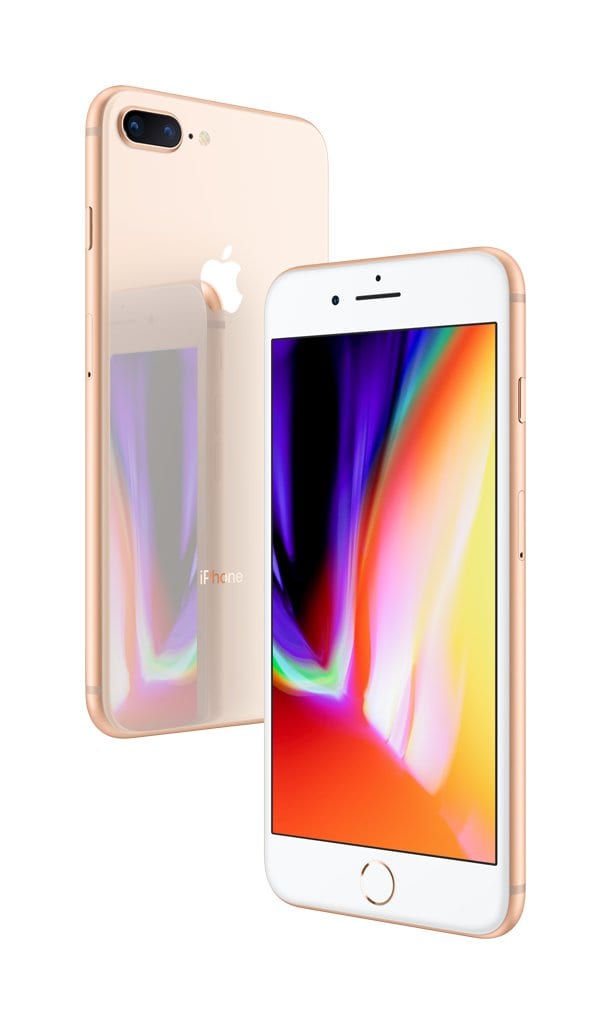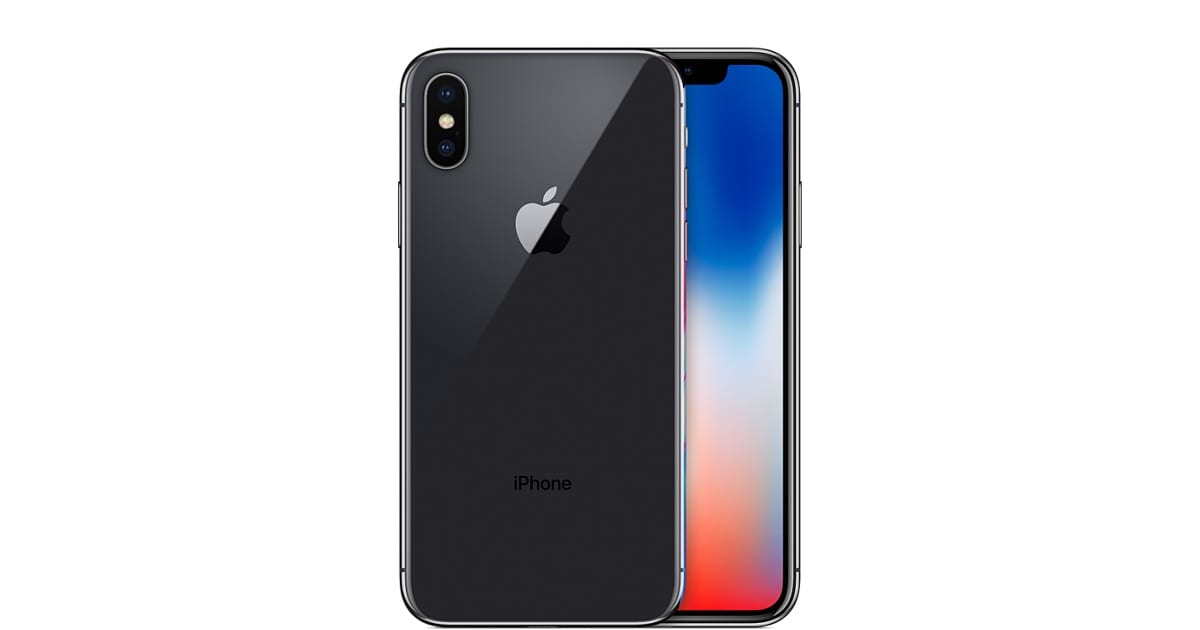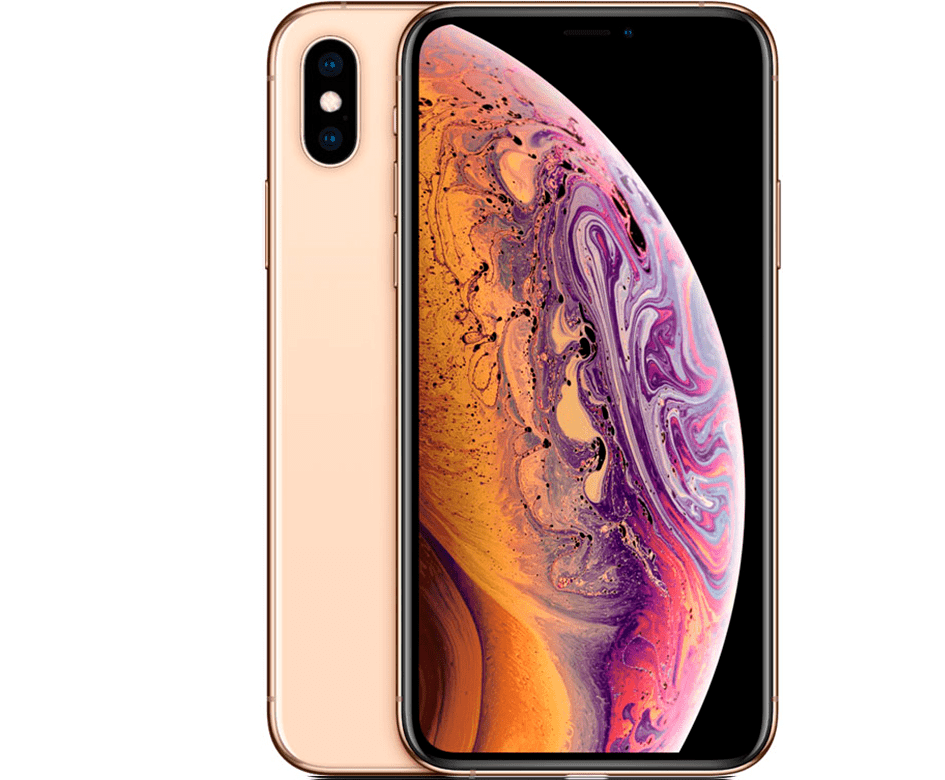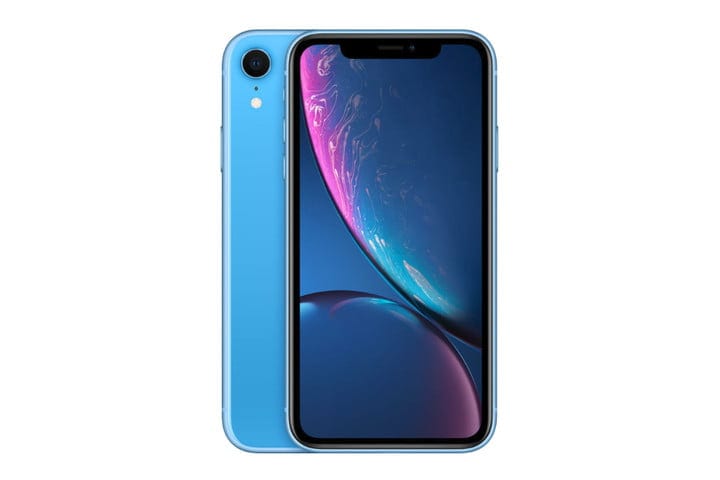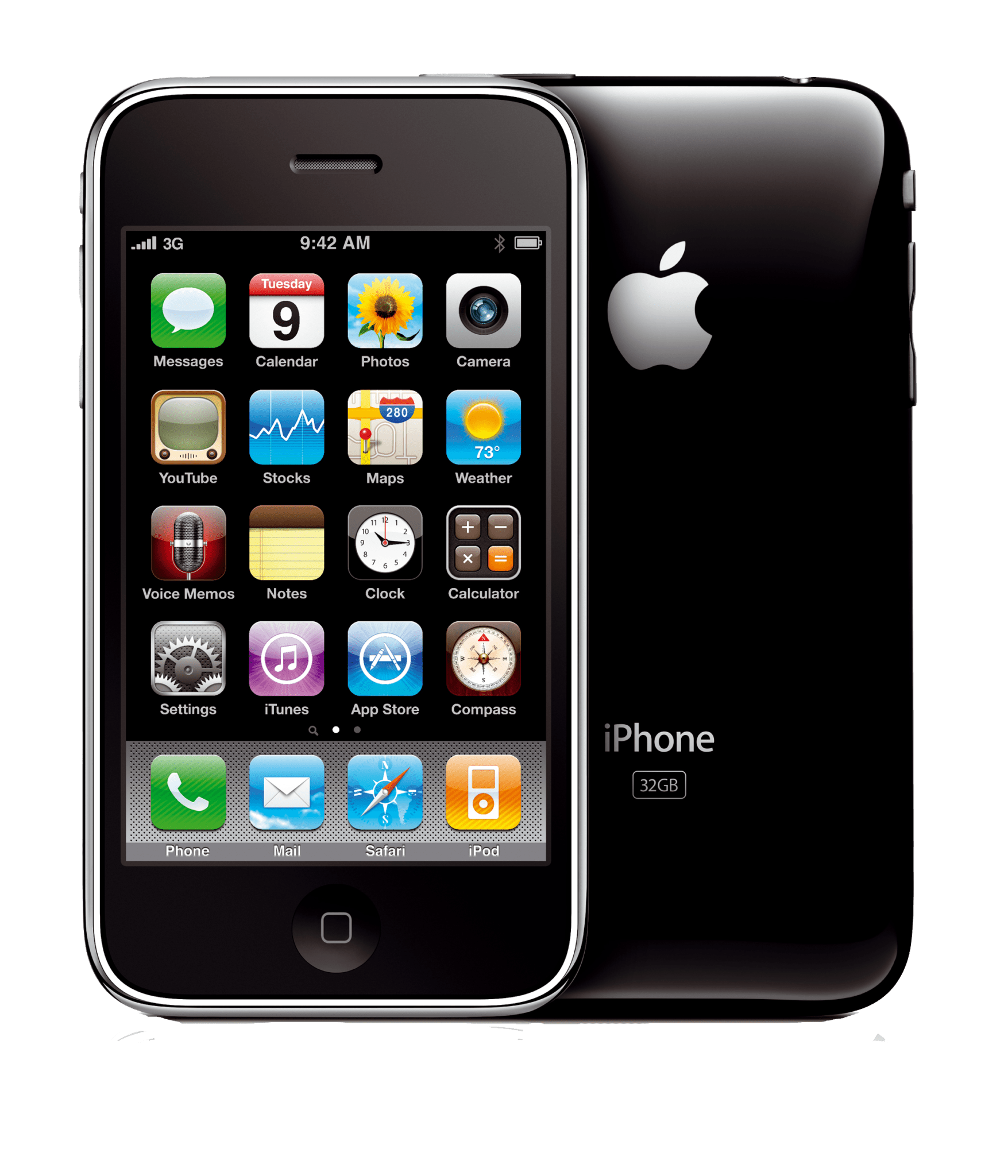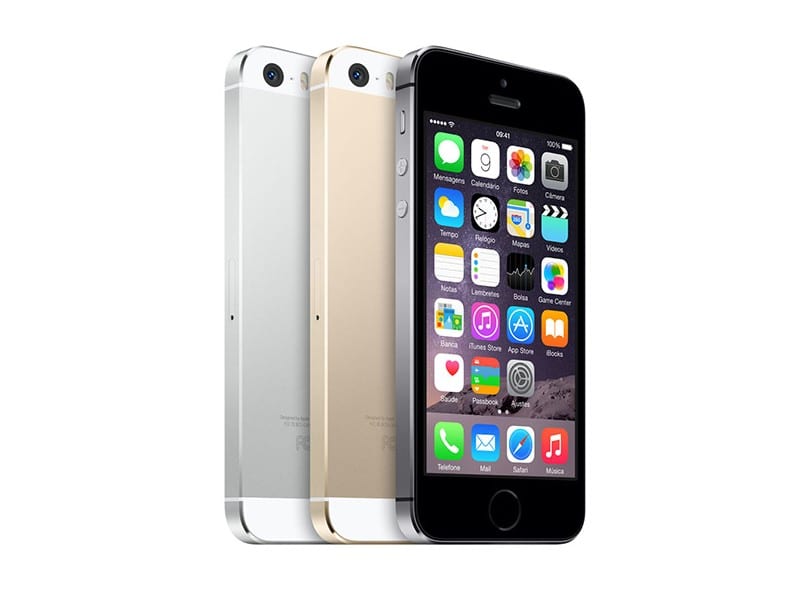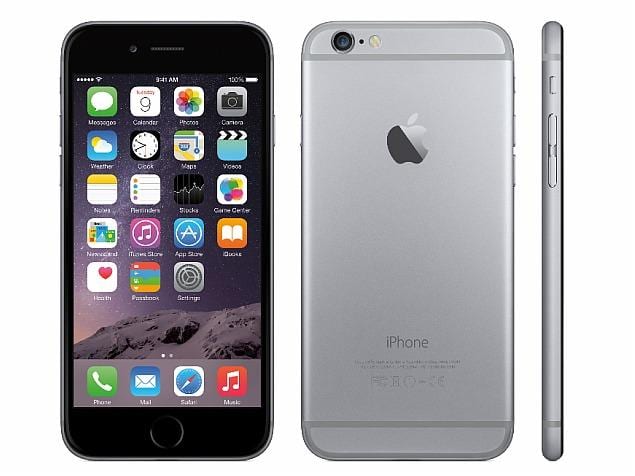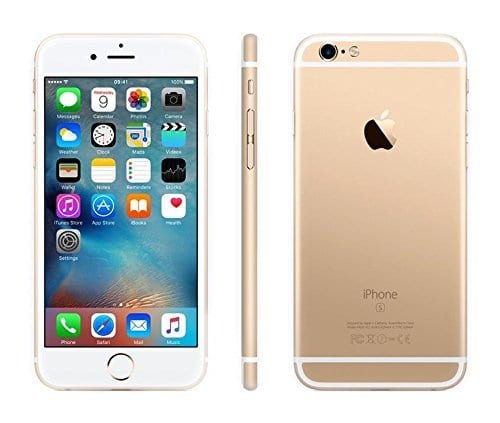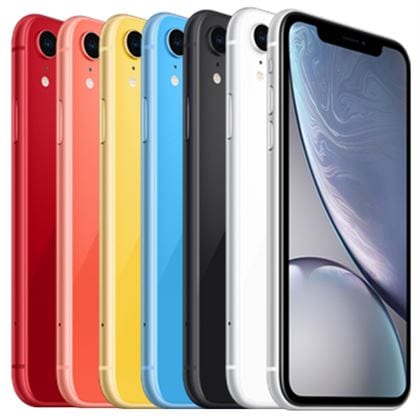Apple is one of the world’s best-known smartphone companies because of its unique and sophisticated iPhone. The iPhone combines an iPod, computer, digital camera and a cell phone with a touchscreen interface in one device. While the list of features of an iPhone is constantly changing with each new model, it is best known for its touchscreen, which enables fast response to single or multiple finger strokes.
In 2016, Apple earned nearly 80% of the worldwide profits on smartphones. Eleven generations of iPhone models were released by Apple. iPhones are currently available in regular and larger sizes and can be configured from storage base 64 GB up to 256 GB.
iPhone (1st generation)
The iPhone 1st generation started shipping June 29, 2007. iPhone 1st generation is a breeze to set up and fun to use, evident from the moment you slide your finger across the screen to unlock it. It’s a wonderful widescreen iPod and fabulous picture viewer. Smart sensors change the orientation of the display from portrait to landscape mode, based on how you hold the device and what you are doing at the time. The scratch-resistant glass-top surface protects iPhone’s gorgeous 3.5-inch touch-screen display. The most notable thing about iPhone is the missing dialing keyboard and/or a full qwerty keyboard. Instead, a virtual keyboard or keyboard appears on the iPhone screen, depending on what you do — for example, entering a web address or banging out a text message. The iPhone’s Internet experience is unlike any before it on a mobile handset. iPhone comes with a decent 2-megapixel digital camera. But it lacks a flash or zoom and doesn’t let you shoot video. iPhone 1st generation shipped with either a 4 or 8 GB hard drive.
iPhone 3G/3GS
It is the second generation of iPhone was introduced on June 9, 2008. The iPhone 3G is the second generation in Apple phone family. It has several new features, such as 3G data, GPS, Bluetooth 2.1+EDR. $199 (US) for the 8GB model and $299 (US) for the 16GB model required a two-year contract and was available only in black, but came bundled with the then-new iPhone OS 3.0 firmware.
The iPhone 3GS launched in 2009. The iPhone 3GS is speedier and is 2x faster than the iPhone3G predecessor, plus it added a 3-megapixel camera with higher resolution and voice control. Video ability was one of the new important features. The price of $199 (US) for the 16GB and $299 (US) for the new 32GB model, both requiring a 2-year contract.
iPhone 4/ 4S
The iPhone 4 was launched in 2010. It was the first time that Apple included its sharp “Retina Display” and FaceTime support. The first iPhone to have a front-facing camera was the iPhone 4. These improvements took the iPhone brand even forward in its generation of peers and its qualities still stand tall among phones in current periods. Its rear camera has been upgraded from 2.0 megapixels to 5.0 megapixels, with an LED flash and a video front camera of VGA quality.
The mainstream availability of iPhone 4S in retail stores started on 14 October 2011. The iPhone 4S came with a 512 MB RAM and had versions that came with 8 GB, 16 GB, 32 GB, or 64 GB of storage. The iPhone 4S also has dual cameras – an 8 megapixel HD video/still camera (1080p at 30 FPS) with a “backside illuminated sensor,” and an LED flash on the rear and a VGA quality video/still camera. A camera on the front designed for video conferencing over a Wi-Fi network with Apple’s included “FaceTime” application.
iPhone 4S is available in black or white for a proposed retail price of $ 199( US) for the 16 GB model, $ 299 (US) for the 32 GB model and $ 399 (US) for the new 64 GB model. On 9 September 2014, 4S was officially discontinued.
iPhone 5/ 5S/ 5C
The iPhone 5 released on September 21, 2012. Compared with its predecessor, the iPhone 5 showed major design changes such as an aluminum body that was thinner and lighter than previous models. It had a new Sony-made 8 MP camera, which was improved low-light performance, and has a 40% faster photo capture. The iPhone 5 started supporting the 4G/LTE bands in this release and subsequent releases. Even though the production of this phone has been discontinued, it is still seen in some hands, a proof of its durability and quality.
iPhone 5S released on September 20, 2013. Among the key features of iPhone 5s is the Touch ID sensor built into the home button, which scans fingerprints to unlock the phone and can also be used to make purchases from the App Store. It also carries the A7 chip with 64-bit desktop-class architecture, which promises twice as fast performance while the M7 coprocessor handles motion tasks to preserve battery life. The iPhone 5S came with 16 GB, 32 GB and 64 GB of flash storage.
iPhone 5C released on September 20, 2013. The iPhone 5C is an iPhone 5 variant with similar hardware requirements but hardhearted polycarbonate shell instead of the original iPhone 5 aluminum. The iPhone 5C has been sold at a discounted point compared with the 5S.
iPhone 6/ 6 Plus
Released in 2014, the iPhone 6 is one of the most sold phones in the world. The upgraded 4.7 and 5.5-inch displays are one of the reasons for their success. The nearly four-year-old smartphone continues to control the popularity charts. Launched in 2014, iPhone 6 still accounts for 1.8 percent of the profits of the smartphone industry. There is the inclusion of a fingerprint sensor “Touch ID” embedded in the home button, which is a great innovation among other devices. The most significant difference between iPhone 6 and iPhone 6 Plus is their screen size. The iPhone 6 sports a 4.7-inch screen and iPhone 6 Plus has a 5.5-inch screen. Users looking for a portability and combination of a screen will prefer the iPhone 6, while those seeking bigger display will benefit from the 6 Plus. Because of its bigger size, the iPhone 6 Plus offered better battery life than the iPhone 6.
iPhone 6S/ 6S Plus
iPhone 6S and iPhone 6S Plus released on September 25, 2015. The iPhone 6S has a similar shape to the iPhone 6 but has updated hardware, including enhanced chassis and system-on-chip upgrades, a 12-megapixel camera, improved fingerprint recognition sensor, LTE Advanced support and ” Hey Siri” capabilities without needing to be connected. It has 3D Touch which lets you do more than ever before. It feels how deeply you press the display, allowing you to do all sorts of important things faster and easier. The iSight camera with 12 megapixels captures sharp, detailed pictures. It takes brilliant 4 K video up to 4 times 1080p HD video resolution. The iPhone 6S/6S Plus also takes self- portrait worthy with the new FaceTime HD 5-megapixel camera. And Live Photos introduces a new way to revive your favorite memories. It captures the moments just before and after the image and moves it with a finger press.
iPhone SE
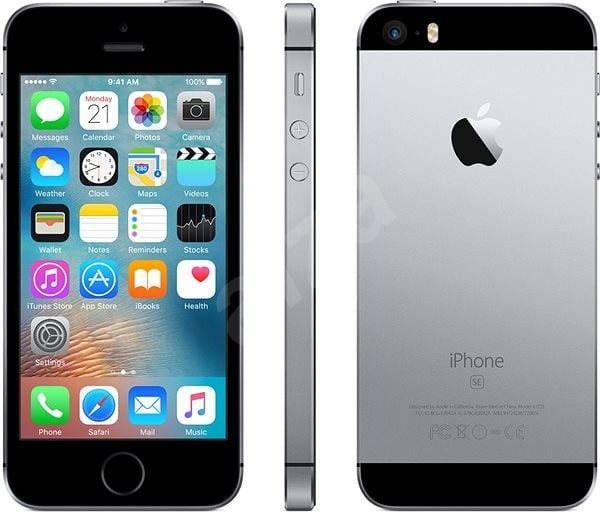
iPhone SE was released on March 24, 2017. The iPhone SE has the same design and dimensions as the iPhone 5S, but the iPhone SE comes in the same four colors as the iPhone 6S: silver, gold, gray and rose gold. It has the new system- on- chip Apple A9, increased battery capacity and a 12-megapixel rear camera capable of recording 4K video. It released with internal storage of 16 GB or 64 GB. It also comes with iOS 9.3, which brings a new Night Shift feature to your eyes, enhanced 3D touch support, a much-improved news app, and multiple Apple Watches connection support.
iPhone 7/ 7 Plus
iPhone 7/ 7 Plus launched in September 2016, becomes the third Apple device in this list of smartphones with the highest sales worldwide. iPhone 7/ 7 Plus still has 6.2 percent of the profits of the smartphone industry. Apple dropped the physical home button from the new iPhone 7 and fill in it with force- sensitive version. The iPhone 7 has no headphone jack. iPhone 7/7 Plus new A10 Fusion processor combines two high-power cores with two low-power cores that combine a much larger battery to extend up to two hours of running time. iPhone 7 and iPhone 7 Plus are water and dust resistant, which is nice, although they are not completely waterproof — keep them more than 30 minutes in a meter of water. The iPhone 7 Plus portrait mode is the appropriate device for making brilliant looking portrait photographs with your iPhone. The iPhone 7 Plus dual camera uses two separate cameras. It has a 12-megapixel camera with a 28 mm f1,8 lens and a 56 mm f2,8 lens with a 12-megapixel camera.
iPhone 8/8 Plus
The iPhone 8/8 Plus launched in September 2017 has become the world’s third most profitable device. However, in addition to the addition of a glass back, iPhone 8 and 8 Plus designs are largely similar to those of their forebears. The iPhone 8 and 8 Plus retain the Retina HD display but are now equipped with True Tone technology that gives automatic screen adjustments based on environmental lighting. One of the noticeable changes comes in the form of a glass back which allows one of biggest internal changes possible: inductive wireless charging that would not have worked through the old model’s aluminum shell. iPhone 8 and 8 Plus features a six-core chip with two performance cores, which is 25 percent faster than the A10 and four performance cores- 70 percent faster than the old model according to Apple.
iPhone X
The iPhone X was released alongside the iPhone 8 and presented itself with a revolutionary new design from Apple. During the first three months of 2018, Apple iPhone X became the top-selling smartphone. The iPhone X is intended to show what Apple considers future technology by using a glass and stainless steel form factor, which offers wireless charging, as well as by adopting OLED screen technology for the first time in iPhone history. It also released a new type of password authentication called Face ID. Face ID is a new innovative technology that allows authentication using advanced technology to scan the face of the user to unlock the iPhone and to use animated emojis. November 2017 launch, its US$ 999 price tag also made it the most expensive iPhone ever. The iPhone X has two options for color: gray space and silver.
iPhone XS/ XS Max
The XS Max is the first big size iPhone of the new bezel-less form factor because the 2017 iPhone X didn’t have a bigger variant. The new iPhone XR display is the most leading LCD in the industry. A cutting-edge backlight design allows the display to reach the corners. It has a brand new camera that overlays and underexposes the shot, takes quick shots to freeze movement and retain sharpness across the frame and captures all the best parts of these frames to create one image. This is what you get from the iPhone XS camera and it makes it so powerful to take photos when you usually lose. The XS has an almost identical design to the X but includes upgraded hardware with the A12 Bionic chip built with a 7-nanometer processor. It also has a dual 12-megapixel rear cameras and a front- facing the 7-megapixel camera with 5.85-inch( 149 mm) OLED display. Apple says the devices have faster face identification technology than iPhone X. The XS and XS Max were released at $ 999/$1099 starting prices in the US.
iPhone XR
The iPhone XR has a 6.1-inch LCD display and is the lowest cost device on the Apple iPhone X family with $749 starting price in the US. iPhone XR is available in six colors: white, black, yellow, blue, coral and red. iPhone XR has the same processor as the XS and XS Max. The A12 Bionic chip Neural Engine uses real-time machine learning to change the way you experience gaming, photos, increased reality, etc. Apple has announced that it is the ” most smartest and powerful chip” ever placed on a smartphone. The iPhone XR is equipped with a 12MP camera system that breaks with portrait mode, portrait lighting, improved bokeh, and new depth control.

